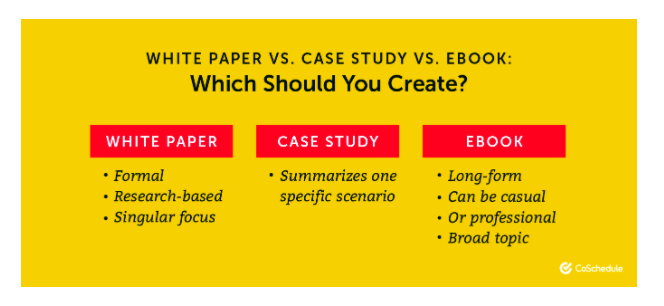What is the difference between an article and a white paper?
Content may be king in the world of marketing, but not all content is created equal. Depending on various factors such as the nature of your business and your audience, some types of content will work better than others. In my case, I’ve seen great success producing articles and white papers.

What’s the difference between them?
Let’s start with articles.
An article should be at least 800 words long. It can be in the form of a press release that informs the public about the brand’s product or service, an editorial piece designed to educate, or an op-ed, which allows you to take a stand or establish your position on a particular matter. There are other variations, but typically, these are what businesses usually use.
An article’s tone can vary, depending on your objectives. It can be formal or informal, educational or entertaining, funny or serious. You also have the option to either publish them on your own website or platform or pitch your article to a relevant third-party site with a solid following.
In my case, I usually use articles as blog posts. It’s a great way to engage and inform my audience from my own perspective. I draw from personal experience and skills and try to write it in short, bite-sized sentences that are easy to understand.
Whitepapers, on the other hand, are lengthier. They’re written in a more formal style, in a more authoritative tone, usually following a very structured format. The writing should also have an impartial stance. Typically, white papers tackle complex issues, which is why they’re usually longer. The goal of whitepapers is to educate the reader on the finer points and details of a specific topic.
I’ve personally used whitepapers to talk about technical subjects. I try to go the extra mile to make sure they’re presented well by having them professionally designed and easily downloadable as a PDF file.
Some key differences between articles and white papers:
- Both whitepapers and articles should be well-researched, authoritative, and credible. The real difference lies in the language and tone of the material you’re creating. I like writing articles in a more conversational way, while whitepapers take on a more serious tone.
- The length of articles versus white papers is an obvious differentiator. Articles are meant to be easy to read, while whitepapers are longer, offering a more in-depth take on the subject matter.
- Whitepapers also show references that you’ve used in detail as an appendix. This isn’t necessarily required for articles. For articles, linking to sources is the norm.
- Because of the in-depth nature of whitepapers and their length, whitepapers tend to take a lot more time to write and usually require more effort. This is why I recommend using them as an incentive for gated content. Articles are faster to write and easier to produce, which makes them perfect for blogs. As you know, consistency is key for blogs.
Hope my answer helps. If you have any questions, leave a message in the comment section below or reach out to me via Leadspanda.
Share This Story
Get the latest growth ideas, strategies, and best practices delivered to your inbox.
Quick read that helps 7000+ subscribers.






